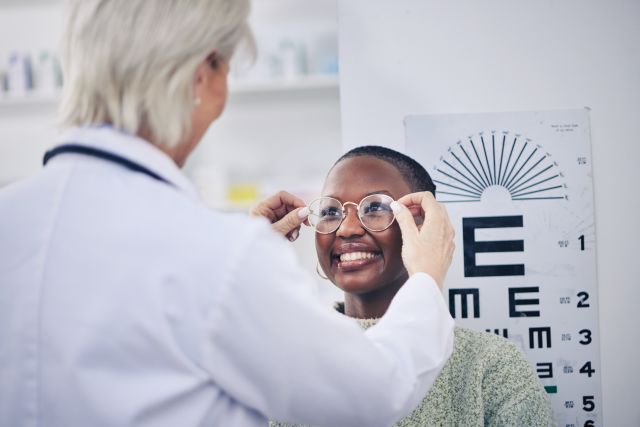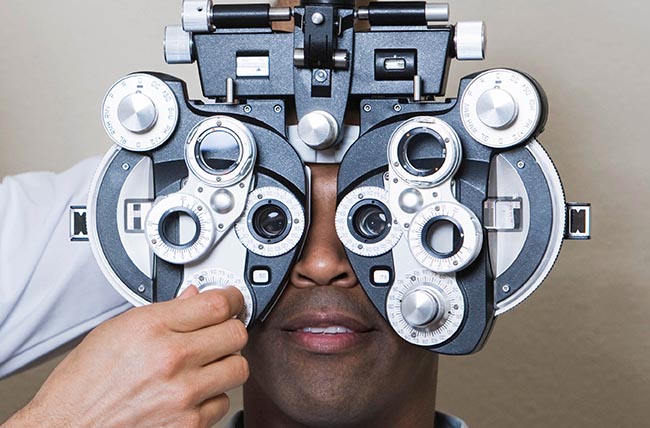The Comprehensive Eye Exam: What to Anticipate Throughout Your Visit to the Eye Doctor
A browse through to the eye physician for an extensive eye exam is even more than a routine check-up; it is a critical action in protecting your aesthetic health and wellness. What exactly takes place during the eye health analysis, and how does it affect the prescription process?
First Examination
The initial appointment during an eye test functions as a crucial structure for understanding an individual's visual health and wellness requirements. This phase establishes the tone for the whole evaluation procedure, enabling the optometrist to gather essential details about the individual's case history, way of life, and details vision issues. By meticulously examining any pre-existing conditions, drugs, or previous surgeries, the eye treatment specialist can tailor the evaluation to resolve individual demands properly.

In addition, the first consultation is an opportunity for patients to articulate any kind of concerns or worries, cultivating a collaborative partnership with their health care company. This communication not just makes certain that the individual feels informed and comfy yet additionally encourages them to take part actively in their eye health monitoring. Collectively, these conversations make it possible for the optometrist to devise a personalized examination strategy, guaranteeing optimal treatment and specific diagnosis.
Visual Acuity Examination
Starting the core elements of an eye examination, the aesthetic skill test is designed to examine the sharpness and clearness of a patient's vision. This essential examination helps figure out how well a person can recognize letters or symbols at a standard range, normally making use of a Snellen chart (Eye Doctor Optometrist). The chart makes up rows of letters that lower in size from leading to base, with the patient positioned at a normal distance of 20 feet
During the test, the person is asked to cover one eye and review aloud the smallest line of letters they can see plainly. This procedure is repeated for the other eye. The outcomes are videotaped as a fraction, with 20/20 vision showing normal aesthetic acuity-- where the client can see at 20 feet what an individual with normal vision can see at that distance.
The aesthetic acuity test likewise recognizes possible refractive mistakes such as myopia, astigmatism, or hyperopia, which might necessitate restorative lenses. By developing a standard of aesthetic efficiency, the examination is an important analysis device that helps the eye treatment specialist in developing an ideal therapy strategy customized to the person's one-of-a-kind aesthetic demands.
Eye Health Assessment
Following the visual acuity examination, a comprehensive eye health assessment is conducted to ensure the overall health of the eyes. This crucial segment of the eye test entails a detailed analysis of both the interior and external structures of the eye. The ophthalmologist or optometrist starts by checking out the eyelids, cornea, conjunctiva, and sclera for any kind of indications of infection, inflammation, or abnormalities. Making use of customized devices like a slit lamp, the practitioner gains a multiplied sight of the eye's composition, enabling detailed examination.
With the usage of ophthalmoscopy or fundus photography, the retina, optic nerve, and blood vessels are diligently examined. In numerous instances, student expansion is executed to enhance presence of the inner eye structures, although this may result in short-lived light sensitivity for the client.
In addition, intraocular stress is measured to screen for glaucoma danger. This is typically done utilizing tonometry, which can identify elevated pressure levels that may recommend possible damages to the optic nerve. Jointly, these assessments form a detailed evaluation to keep eye health.
Refraction and Prescription
Refraction is an advanced procedure conducted by eye treatment specialists to figure out the exact lens power needed to correct refractive mistakes such as nearsightedness, presbyopia, astigmatism, and hyperopia. The goal of this procedure is to evaluate just how light bends as it passes through the eye, permitting the expert to establish whether restorative lenses are required for boosted aesthetic acuity.
Throughout the refraction process, the patient is asked to look via a phoropter, a tool that has various lenses. The expert will systematically change these lenses and ask the person to compare quality between alternatives up until the best feasible vision is achieved. This procedure is critical in crafting an exact prescription that specifies the proper lens power for eyeglasses or call lenses.
The prescription derived from this treatment not just enhances vision yet also functions as a foundation for choosing ideal corrective eyeglasses. It is necessary to make sure that prescriptions are frequently upgraded, as changes in vision can happen with time, emphasizing the significance of regular eye examinations. This precise focus to information helps preserve clear, comfy vision in every day life.
Follow-Up Recommendations

During a follow-up see, the eye physician will certainly carry out a series of examinations to review aesthetic acuity and look for any kind of adjustments in vision that may require an update to the prescription. In addition, the follow-up supplies a chance to talk about any pain or problems experienced with present eyewear. Changes can be made to make certain comfort and efficacy, whether through lens alteration or framework adjustments.
For patients with continuous conditions such as glaucoma, diabetes-related eye concerns, or macular degeneration, more regular follow-ups may be needed. These visits are essential for taking care of and potentially slowing the development of eye disease. Sticking to these recommendations can significantly add to maintaining visual wellness and avoiding long-term complications.
Final Thought
The comprehensive eye test is a necessary process for preserving visual health, including a detailed evaluation of clinical history and vision problems. Trick redirected here components consist of her response the aesthetic acuity examination, which assesses sight clarity, and the eye health evaluation, which examines the general problem of the eyes. Refraction examinations help identify the specific lens prescription necessary for optimal vision modification. Follow-up referrals provide support for recurring eye treatment, ensuring that any prospective problems are resolved promptly and effectively.
A browse through to the eye medical professional for a thorough eye test is even more than a regular examination; it is a vital action in protecting your aesthetic health.Kicking off the core parts of an eye exam, the aesthetic acuity test is designed to assess the intensity and clearness of an individual's vision.Complying with the visual skill examination, an extensive eye health assessment is performed to ensure the total health of the eyes. These sees enable the eye care specialist to keep an eye on modifications in vision, update prescriptions, and analyze the general health of the eyes. Trick elements include the aesthetic acuity test, which reviews vision clarity, and the eye wellness assessment, which examines the general condition of the eyes.